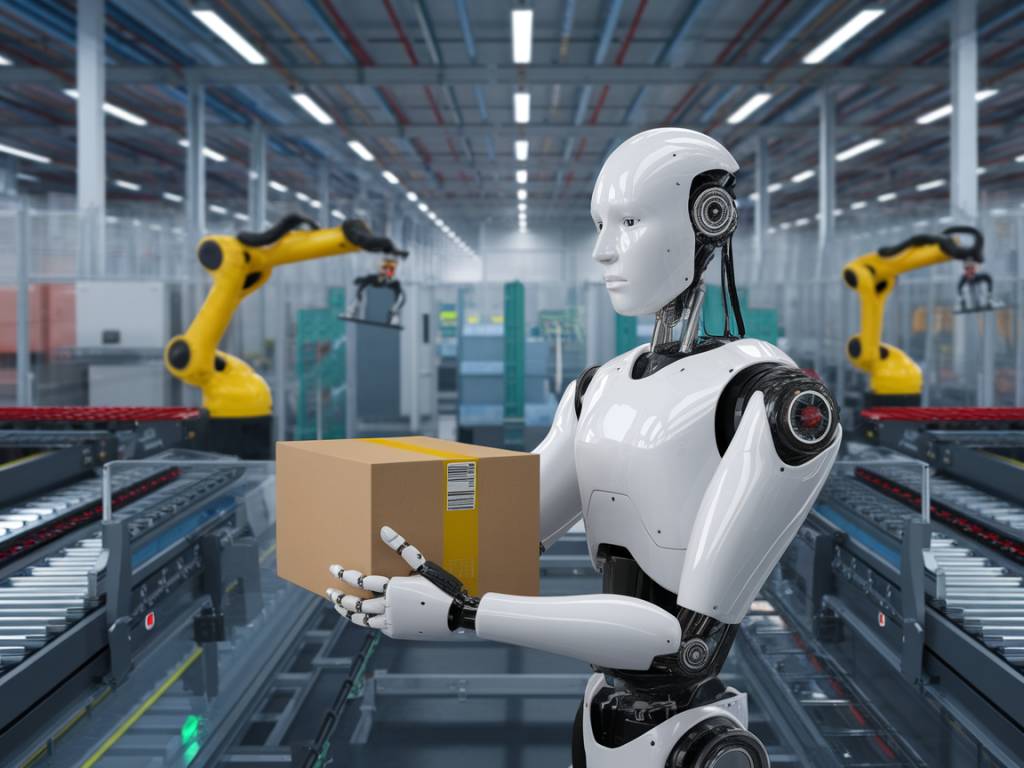In recent years, the evolution of logistics has taken a quantum leap with the integration of automation technologies. This shift towards automation aims to improve efficiency, reduce human error, and optimize supply chain operations. However, as logistics processes become increasingly reliant on automated systems, the importance of cybersecurity cannot be overstated. This article delves into the cybersecurity challenges faced by an automated logistics world, explores their implications, and suggests best practices for mitigating these risks.
Growing Dependence on Automated Systems
The logistics industry has embraced automation to streamline operations and enhance productivity. Automated Guided Vehicles (AGVs), drones, robotic process automation (RPA), and Internet of Things (IoT) devices are being deployed extensively in warehouses, distribution centers, and during last-mile delivery. These systems rely on critical software and interconnected networks to function harmoniously.
However, this interdependence creates several entry points for potential cyber threats. Hackers can exploit these vulnerabilities to disrupt supply chains, causing delays, financial losses, and reputational damage. The reliance on automation underscores the need for robust cybersecurity measures to safeguard these systems.
Common Cybersecurity Threats in Automated Logistics
Sophisticated cyber threats are continually evolving, targeting automated logistics systems in various ways. Here are some prevalent cybersecurity threats:
- Ransomware Attacks: Hackers can infiltrate logistics systems and encrypt data, demanding a ransom for its release. These attacks can paralyze entire operations until the ransom is paid or systems are restored from backups.
- Data Breaches: Automated logistics systems often deal with vast amounts of sensitive data, including customer information, shipping details, and operational metrics. Breaches can lead to the theft of confidential data, impacting customer trust and business integrity.
- Supply Chain Attacks: Attackers may target weaker links in the supply chain network, such as third-party vendors or partners, to gain access to larger organizations. This lateral movement within the network can lead to extensive damage.
- IoT Device Vulnerabilities: IoT devices are integral to automated logistics, but they often lack robust security features. These devices can be hijacked to gain unauthorized access to the broader network.
- DDoS Attacks: Distributed Denial-of-Service (DDoS) attacks flood logistics systems with excessive traffic, rendering them inoperable. Such disruptions can lead to significant supply chain delays.
Implications of Cybersecurity Breaches
The ramifications of cybersecurity breaches in automated logistics are far-reaching:
- Operational Downtime: Cyber attacks can cripple logistics systems, leading to prolonged operational downtime. This disrupts supply chain continuity and hampers service delivery.
- Financial Losses: The financial impact of cybersecurity breaches can be substantial. Costs may include immediate expenses for ransom payments, system recovery, legal fees, and potential regulatory fines.
- Reputational Damage: Trust is a vital asset in the logistics industry. Breaches erode customer trust, leading to a loss of business and long-term harm to brand reputation.
- Regulatory Compliance: Failing to protect data adequately can result in non-compliance with industry regulations, attracting significant penalties and legal repercussions.
Best Practices for Mitigating Cybersecurity Risks
Implementing a comprehensive cybersecurity strategy is essential to safeguarding automated logistics systems. Here are some best practices to consider:
- Conduct Regular Risk Assessments: Regularly evaluate the security posture of your logistics infrastructure. Identify vulnerabilities, assess risks, and prioritize mitigation efforts.
- Secure IoT Devices: Ensure that all IoT devices are securely configured and regularly updated with the latest firmware and patches. Use strong authentication protocols to prevent unauthorized access.
- Implement Network Segmentation: Segment networks to isolate critical systems and limit lateral movement in case of a breach. This containment strategy minimizes the impact of cyber attacks.
- Use Encryption: Encrypt sensitive data both in transit and at rest. Encryption ensures that even if data is intercepted, it remains unreadable to unauthorized parties.
- Regular Software Updates: Keep all software, including operating systems and applications, up to date. Regular updates address known vulnerabilities and enhance system security.
- Employee Training: Train employees on cybersecurity best practices, including recognizing phishing attempts, using strong passwords, and adhering to security protocols.
- Establish Incident Response Plans: Develop and regularly test incident response plans to ensure swift and effective actions in the event of a cyber attack. Preparedness minimizes downtime and mitigates damage.
Emerging Technologies in Cybersecurity for Automated Logistics
Advancements in cybersecurity technologies are providing new layers of protection for automated logistics systems. Some of these include:
- Artificial Intelligence (AI) and Machine Learning (ML): AI and ML algorithms can detect anomalies and potential threats in real-time, allowing for prompt responses to emerging risks.
- Blockchain Technology: Blockchain can enhance supply chain security by providing transparent, immutable records of all transactions, reducing the risk of data tampering.
- Zero Trust Architecture: This security model eliminates implicit trust within the network. Every access request is verified, ensuring that only authenticated and authorized users or devices interact with critical systems.
- Biometric Authentication: The use of biometric data (such as fingerprints or facial recognition) adds an extra layer of security, reducing the risk of unauthorized access.
The Role of Industry Collaboration
Combating cybersecurity threats in automated logistics requires a collaborative effort. Industry stakeholders, including logistics providers, technology vendors, and regulatory bodies, must work together to establish robust security frameworks and share threat intelligence. Collective action enhances the resilience of the entire logistics ecosystem.
As logistics operations increasingly embrace automation, the importance of cybersecurity continues to grow. Understanding the common threats, implications of breaches, and best practices for mitigation is crucial for ensuring the integrity and efficiency of automated logistics systems. By leveraging emerging technologies and promoting industry collaboration, stakeholders can create a secure and resilient logistics environment.
Summary: This article explores the cybersecurity challenges in an automated logistics world, discussing common threats, their implications, and best practices for safeguarding systems. It highlights the significance of emerging technologies and the importance of industry collaboration in creating secure logistics environments.




